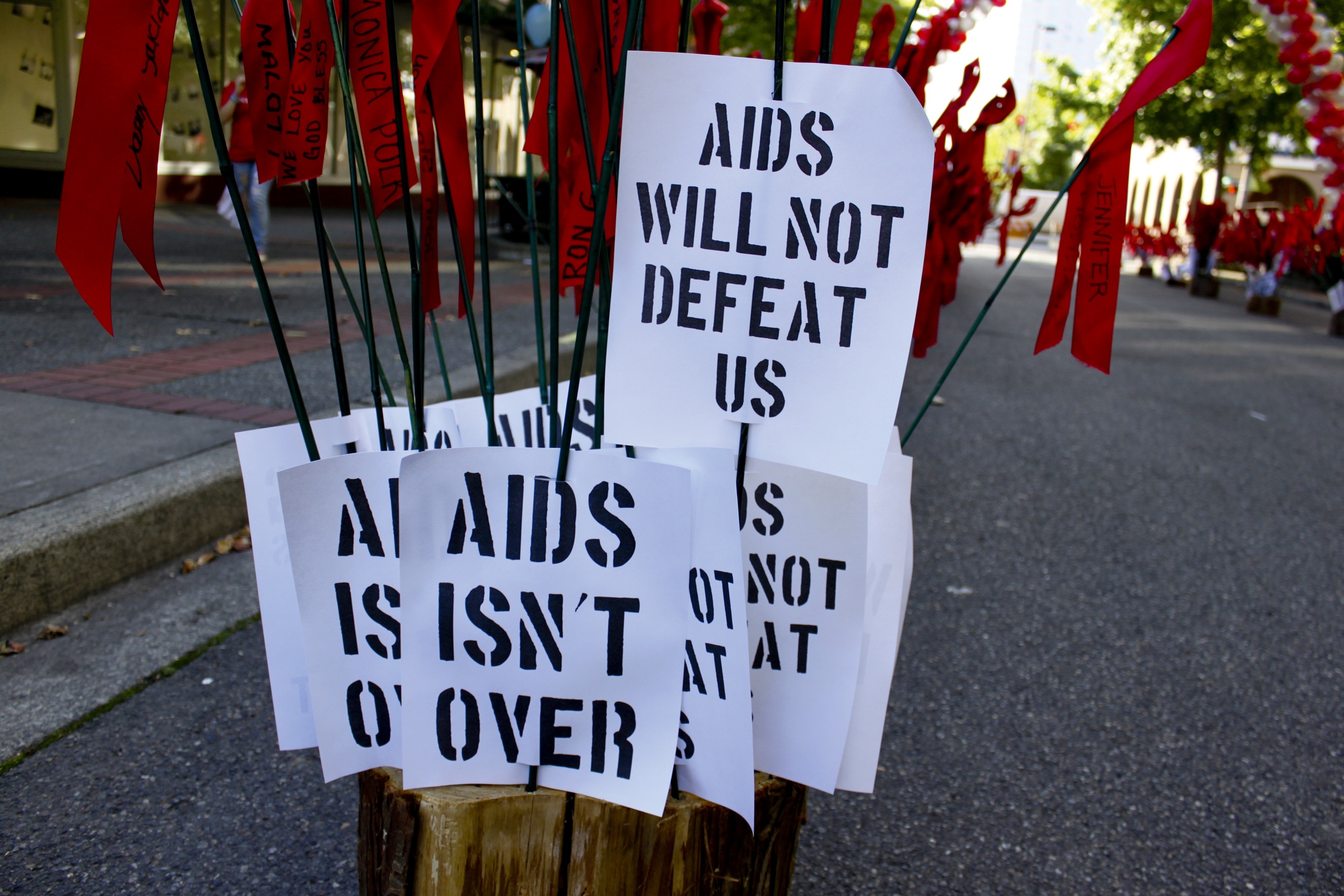
| Every year, groups of people gather in downtown Tacoma to go for a walk. Some people dress up, wearing crazy tutus or hats, and this year there was even a Guinness beer costume. Many wear shirts with a family member or friend’s face and name. There are strollers, signs, water bottles and dogs galore. Once the clock hits 10:30, the woo-hooing carries the crowd through the streets of Tacoma and the annual AIDS Walk begins.
Saturday, Sept. 24 marked the 20th annual Walk, an event sponsored by the Pierce County AIDS Foundation (PCAF) that raises funds and awareness about HIV/AIDS. According to PCAF, Pierce County has the second-highest incidence of AIDS in Washington State. The Foundation reaches out to more than 1,000 people who have been affected by AIDS/HIV. From start to finish, the AIDS Walk is not only an educational experience, but is also a great opportunity for the community to come together and have fun. Volunteers provide breakfast and encourage walkers to visit various stands set up along 11th Street. A live band plays in the background while people can view the history of AIDS/HIV displayed on large boards along the grassy plaza where the event is hosted. The registration table passes out t-shirts commemorating the walk’s 20th year. Puget Sound has long been an enthusiastic supporter of the Walk. The school became officially involved in 2006, however various campus clubs have been involved for longer. “We wanted it to be an institutional commitment,” says Dave Wright, University Director of Spirituality, Service and Social Justice, who helped launch the campaign for organized university involvement in the Walk in 2006. Clay Thompson ‘09 created the Loggers of Love logo, the official logo of the Puget Sound AIDS Walk team, in 2007. Once the walk actually begins, walkers grab green sticks as they pass under the arch of balloons, each containing a red ribbon and a name. Some more exuberant walkers grab more than a few, carrying with them the names of those who have been affected. One of the clubs that has been involved in the AIDS Walk since before the school’s official participation is B-GLAD. It is well known that AIDS used to be associated with homosexuals and was even once known as GRID, Gay-Related Immune Deficiency. Emily Bader, the Co-President of B-GLAD, says HIV/AIDS is an issue that is particularly important to the queer community, but because HIV is transmitted through heterosexual sex and intravenous needles, it’s not just a queer issue. “So many people still see it as a gay issue that I feel that if the queer community doesn’t find it important, other people won’t find it important,” says Bader. “We need to say, ‘This is important, not just for us, but for everyone.’” Along the Puget Sound, participants can pause for a bottle of water. Several stands and tables are set up that allow walkers to learn more about PCAF. There are also stands set up that provide activities for walkers to help honor the people they are walking for or anyone they want to remember. After a break, the turning point in the walk begins to head back to its beginning. Following the Glass Museum stairs, members near the end of their almost two-mile path are continually cheered on, being promised free lunch and a relaxing end. Red ribbons decorate many parts of the path, leading sporadic groups along. Though the last leg is up the steep hills that are prevalent downtown, they can then triumph when they come back to the familiar balloon arch. Music still plays in the background and the smell of cooking hot dogs pervades the air. Bader first went to the AIDS Walk as a freshman, and she says, “It was an interesting experience because it was so soon after the semester had started I wasn’t close to any of the members of B-GLAD yet. It was a great bonding experience. That was one of the moments where I felt I was really part of the B-GLAD community.” Wright says the AIDS Walk as one of his favorite events of the year, citing the vendor booths with information about AIDS and related resources, speeches by local politicians and entertainment by local musical artists. “Each year… there’s a hundred people milling about… in good spirits, waiting for the walk. It’s really meant to be an inspiring rally.” PHOTO COURTESY / SHANA MURRAYWOLF |
